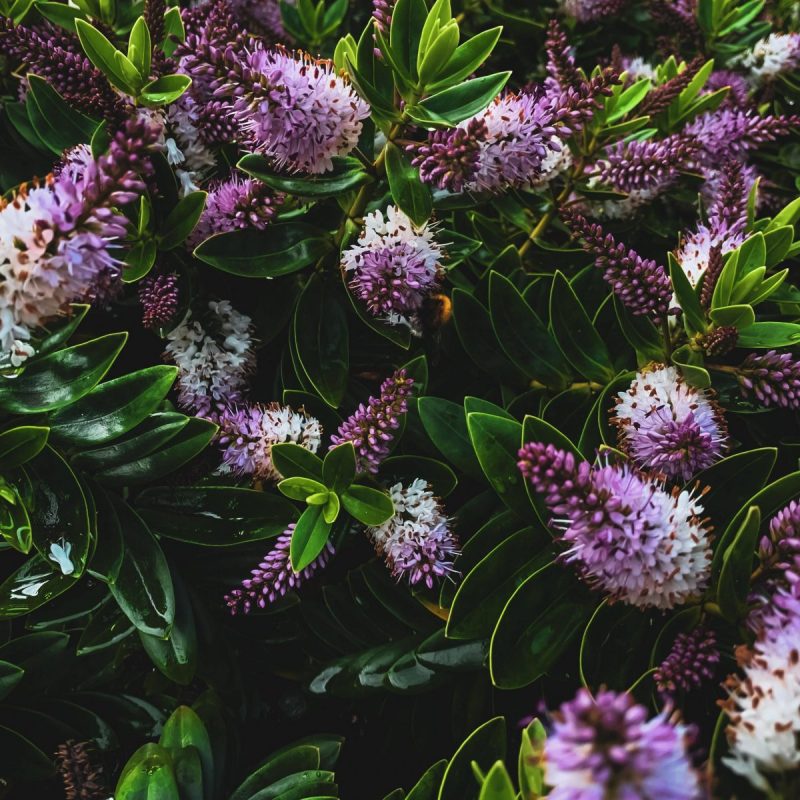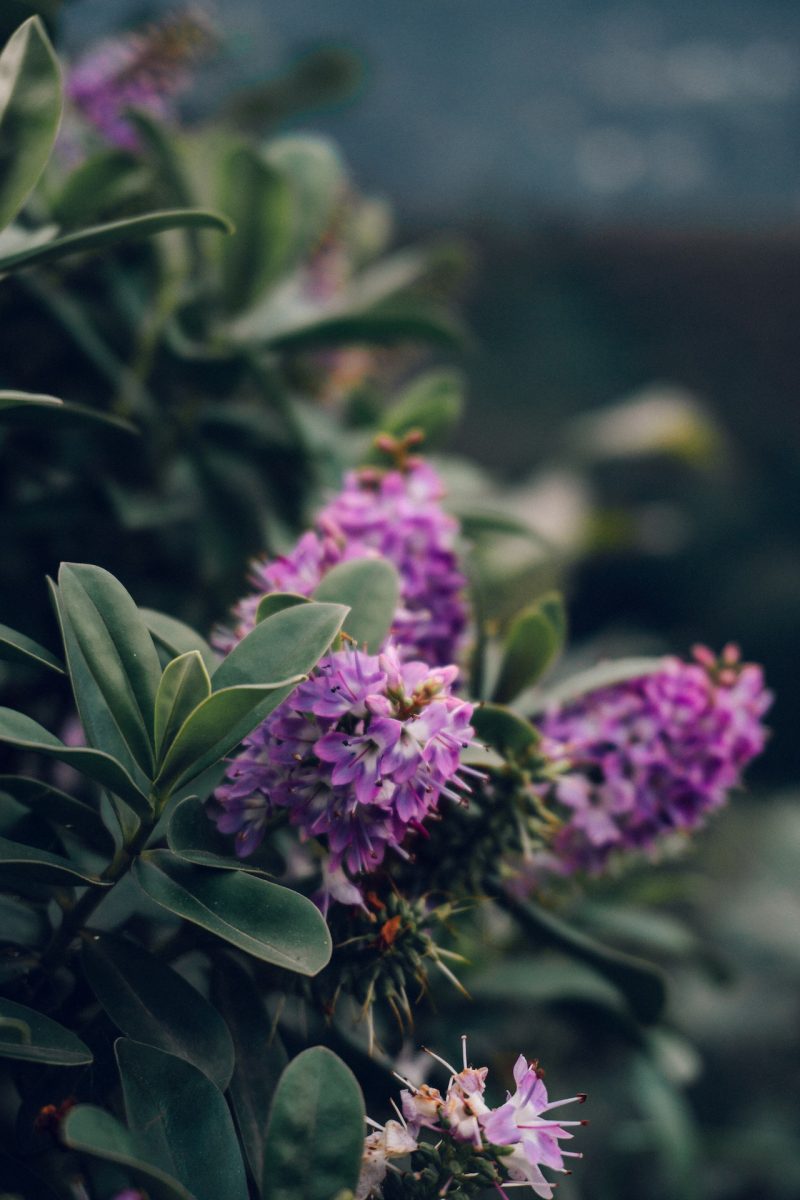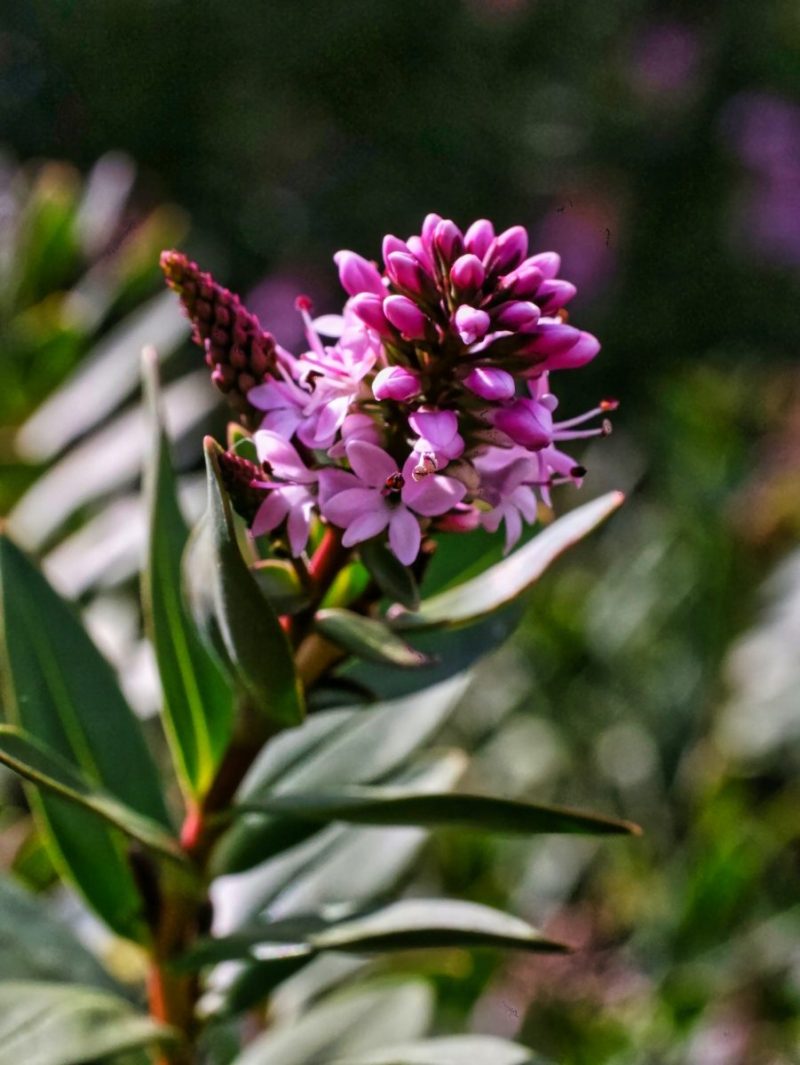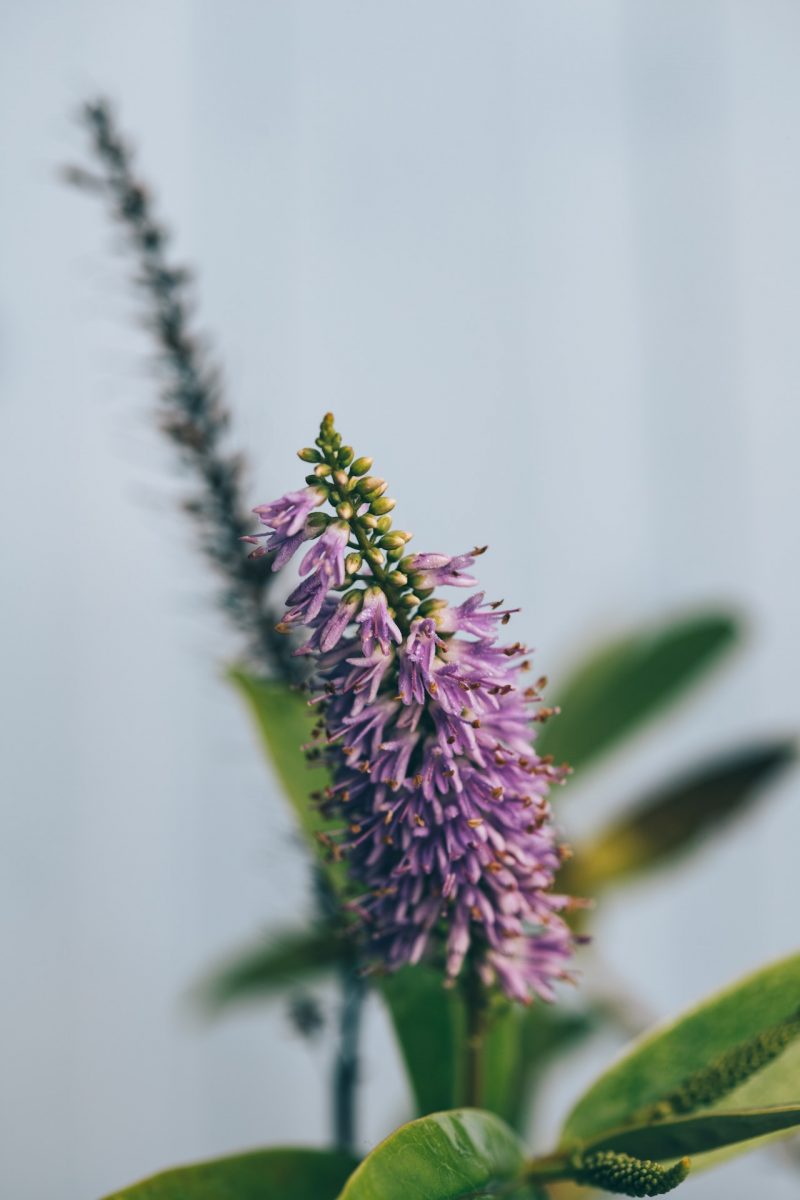Hebe, planting guide and care work

Hebe (Hebe spp.) is a group of shrubs native to New Zealand, belonging to the Plantaginaceae family. They are perennial shrubs, with a compact shape and persistent foliage that is decorative thanks to the color of its foliage and flowers. They are found both outdoors (in the garden) and as potted plants. The leaves have various colors, namely green, purple, blue-green, brown and gray, and the flowers can be red, pink, white, purple or blue.
Hebe – Species and cultivars
Within the Hebe genus, there are over 100 species and numerous cultivars. Among the most popular cultivars, we mention:
- Hebe ‘Variegata’: it has variegated leaves with a gray-green center and cream-coloured edges. It is a variety with tall purple flowers, suitable for planting in the garden;
- Hebe ‘Western Hills’: a variety with silver-grey leaves and white flowers;
- Hebe ‘Red Edge’: it has silvery blue-green leaves and red, brown flowers;
- Hebe ‘Grace Kelly’: it stands out for its variegated leaves (white and green) and purple flowers.



Environmental conditions
Light. Hebe shrubs grow and develop properly in sunny, but also in partially shaded places. However, placing them in partially shaded areas can cause the plants to become longer, as well as to stop flowering.
Temperature. The Hebe genus is quite resistant and can tolerate low temperatures. However, strong or frosts can affect the shrubs. Therefore, for a harmonious growth, a climate with warm summers and mild winters is ideal.
Soil. It needs a soil that ensures a good water drainage. It prefers well-drained soils, without waterlogging. At the same time, the shrubs of the Hebe genus do not react favorably to extreme pH differences. Most plants tolerate a slightly acidic to slightly alkaline pH, but, in general, a neutral one is the most suitable.
Care
Watering. Although the shrubs of the Hebe genus stand out for their resistance to drought, for an optimal growth, as well as to maintain a healthy foliage, they also need the administration of a suitable volume of water, depending on the recorded temperatures and the rainfall.
Fertilizing. During the vegetative growth period, to ensure their development and to help the flowering process, the regular administration of fertilizers specially formulated for the nutritional requirements of decorative plants is recommended.
Recommended products
-
You can find products on a different store
Change Store -
You can find products on a different store
Change Store -
You can find products on a different store
Change Store -
You can find products on a different store
Change Store -
You can find products on a different store
Change Store -
You can find products on a different store
Change Store -
You can find products on a different store
Change Store -
You can find products on a different store
Change Store -
You can find products on a different store
Change Store -
You can find products on a different store
Change Store -
You can find products on a different store
Change Store -
You can find products on a different store
Change Store -
You can find products on a different store
Change Store -
You can find products on a different store
Change Store -
You can find products on a different store
Change Store -
You can find products on a different store
Change Store -
You can find products on a different store
Change Store -
You can find products on a different store
Change Store -
You can find products on a different store
Change Store -
You can find products on a different store
Change Store -
You can find products on a different store
Change Store -
You can find products on a different store
Change Store -
You can find products on a different store
Change Store -
You can find products on a different store
Change Store
Propagation. They can be propagated by seeds (being a more difficult process) or by cuttings (the most common way), which are rooted in a special substrate.
Pruning. To keep the aesthetic aspect of the shrubs, regular cuts can be done during the vegetative growth period. At the same time, after the flowers wither, it is recommended to remove them, to stimulate a new wave of flowering.
Recommended products
-
You can find products on a different store
Change Store -
You can find products on a different store
Change Store -
You can find products on a different store
Change Store -
You can find products on a different store
Change Store -
You can find products on a different store
Change Store -
You can find products on a different store
Change Store -
You can find products on a different store
Change Store -
You can find products on a different store
Change Store -
You can find products on a different store
Change Store -
You can find products on a different store
Change Store -
You can find products on a different store
Change Store -
You can find products on a different store
Change Store -
You can find products on a different store
Change Store -
You can find products on a different store
Change Store -
You can find products on a different store
Change Store -
You can find products on a different store
Change Store -
You can find products on a different store
Change Store -
You can find products on a different store
Change Store -
You can find products on a different store
Change Store -
You can find products on a different store
Change Store -
You can find products on a different store
Change Store -
You can find products on a different store
Change Store -
You can find products on a different store
Change Store -
You can find products on a different store
Change Store
Taking care of potted shrubs
Hebe shrubs can be used both as decorative species for the garden (planted directly in the garden), or as indoor potted plants. In the case of specimens planted in flowerpots/containers, it is important that the containers have drainage holes, and that the substrate ensures an adequate water drainage, as Hebe does not tolerate a permanently wet substrate. It is recommended to transplant it into a large flowerpot when the current one has become too small. This is usually done every two years or when necessary, depending on the plant’s rate of growth.
Diseases and pests
Hebe can be attacked by mites, aphids, and if the conditions are favorable (for example, high humidity, poor air circulation) it can be affected by various fungal diseases.
Recommended products
-
You can find products on a different store
Change Store -
You can find products on a different store
Change Store -
You can find products on a different store
Change Store -
You can find products on a different store
Change Store -
You can find products on a different store
Change Store -
You can find products on a different store
Change Store -
You can find products on a different store
Change Store -
You can find products on a different store
Change Store -
You can find products on a different store
Change Store -
You can find products on a different store
Change Store -
You can find products on a different store
Change Store -
You can find products on a different store
Change Store -
You can find products on a different store
Change Store -
You can find products on a different store
Change Store -
You can find products on a different store
Change Store -
You can find products on a different store
Change Store -
You can find products on a different store
Change Store -
You can find products on a different store
Change Store -
You can find products on a different store
Change Store -
You can find products on a different store
Change Store -
You can find products on a different store
Change Store -
You can find products on a different store
Change Store -
You can find products on a different store
Change Store -
You can find products on a different store
Change Store
Additionally:
- The lack of flowers and the lush growth of the foliage is often associated with excessive nitrogen fertilization;
- In the case of indoor potted shrubs, it is recommended that they be placed in an area where they can benefit from as much light as possible during the winter months. In summer, the flowerpots can be moved outside.















































































































































































































































































































































































































































